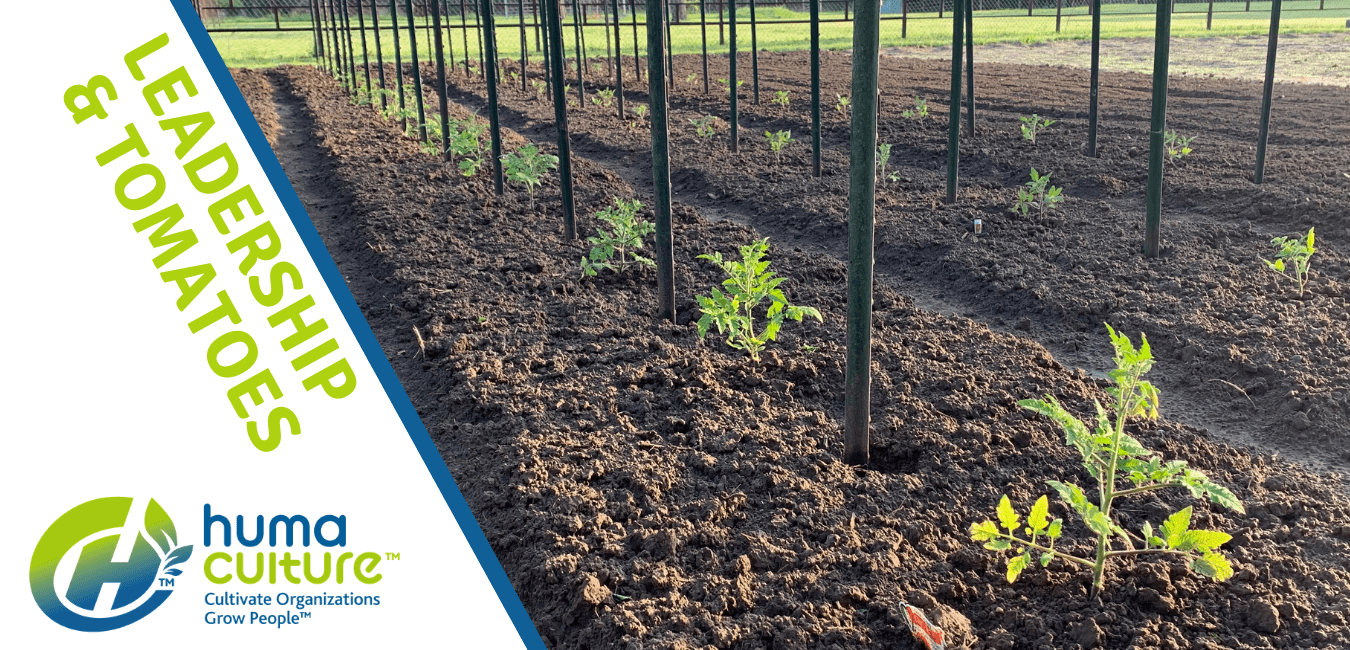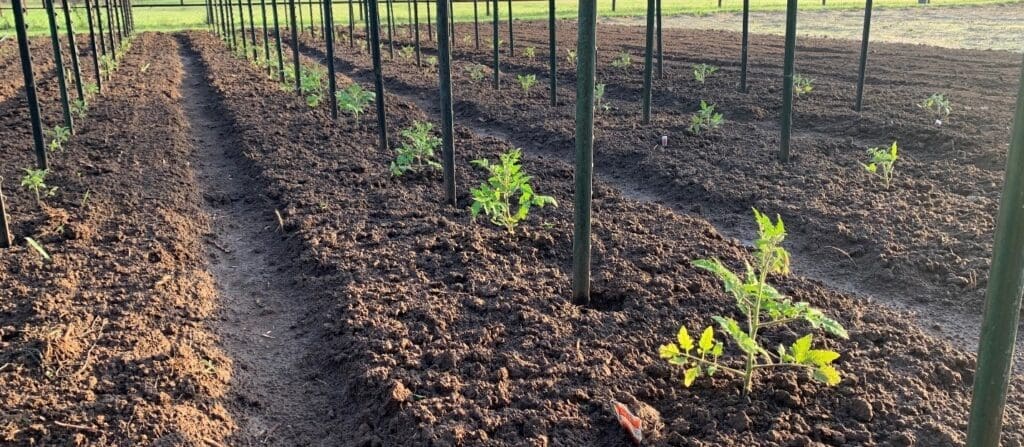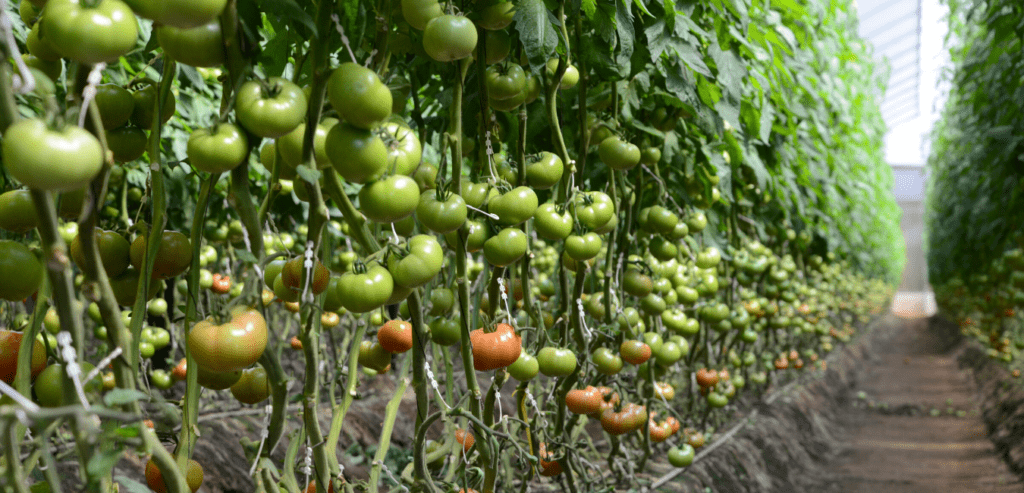Leadership & Tomatoes: 3 Business Principles from My Garden

About 1 in 3 people aspire to a leadership role in business.1 About 1 in 3 people grow a kitchen garden.2 The motivation is the same with both demographics. What is it? The tomatoes, of course. Business success. The harvest.
In turn, successful businesses and successful gardens also have something in common: the people who are rooting (pun intended) for it all to be a thriving ecosystem, resulting in a bountiful harvest for everyone.
Over the years, I have observed that many horticulture principles can provide insights and understanding to help those in leadership build more successful organizations.
Leadership Principle #1 — First build the soil.
Without first building healthy soil, gardening is unlikely to be successful. Well-prepared, deep garden soil gives plants the best opportunity to grow a strong root system.

In my garden, I till the soil each spring while the temperatures are still dipping below freezing. I add compost, fall leaves, and grass clippings to add nutrients and texture to the soil. I add alkaline wood ash from winter fires to maintain the soil’s pH balance, since I know my iron-laden well water tends to acidify the soil over time.
Well-prepared soil ensures the plants have the nutrients they need. Good soil also maintains a more consistent temperature, and it allows excess water to drain away faster, retaining only a healthy amount of moisture and retaining it longer.
If we think of businesses and organizations as the soil in which we grow and earn our living, we can easily begin to see parallels between a garden and an organization. An organization that is well prepared has sufficient capitalization, delivers products and services consistent with its vision and mission, is conducive to employee health and well-being, has reserves to weather economic storms, etc.
Most new businesses fail because those who form them are focused primarily on the success they hope to achieve (i.e. harvesting a bumper crop of metaphorical tomatoes), rather than first focusing on the soil preparation that will be critical to that success.
Leadership Principle #2 — Support the plants as they grow.
Once the soil is prepared, the hardest work is done. I have created a nutrient-rich, foundational environment the tomato plants can send deep roots down into and draw resources from to thrive.

In addition to building the soil, I also have further resources to ensure the tomatoes’ success. I supply supports for the plants as they grow taller and bend under the weight of their fruit. I provide irrigation, giving plants the extra water they need in the dry summertime. I walk through the garden almost every day to identify stressors affecting the plants so I can intervene with extra support if necessary.
Employees—even those in the best-prepared organizational soils—will experience negative stressors and challenges from time to time. Distressed tomato plants, just like people experiencing excessive stress, will never be as productive as they would be if they were healthy, and the quality of what they produce will likely be lower as well. Like a horticulturist walking through the garden, a person in a leadership position needs to be able to recognize when something is preventing the employees within their span of care from fully thriving.
Perhaps the employee is not well-matched to the job; they might benefit from transplanting to another area of the organization. Perhaps some benefits, compensation, recognition and performance management programs, advancement pathways, etc. are not properly designed to align with the organizational vision or mission; more beneficial behavioral designs could be put in place instead. Perhaps there are organizational climate challenges; the team might need special support during especially trying times to overcome the difficulties and thrive.
Often, the problem lies not with the employee, but with the organization and whether it optimizes the availability of its resources so employees can effectively leverage them and thrive.
Leadership Principle #3 — Plants don’t exist for soil; soil exists for plants.
The primary focus of a successful garden is never actually the plants. Plants come and go. If they are happy and healthy in well-built soil, they will thrive and produce a great crop.
Yet I never think of my tomato plants as resources to be exploited. Rather, in partnership and anticipation, I provide them with great soil and support them as they grow and produce. Most of my effort is directed into building the soil for the plants and making sure they have everything they need to thrive; the plants themselves do the rest. Both my tomatoes and I work in this gardening venture, looking ahead to the reward – a bountiful harvest.
One of the most important lessons I have learned from gardening is that just as the plants do not exist for the soil, people do not exist for the organization. Employees—humans—are not “resources” or “capital.” In fact, these terms have come to bother me deeply. “Capital” and “resources” are things an organization owns, rents, or acquires through debt to produce a product or deliver a service. Grouping people into a category of owned or rented assets is very discomforting to the thoughtful person.
Further, I have observed that developing policies and practices based on the analogy of owning or renting people (as the capital/resources terminology implies) leads to confusion on many fronts. Ultimately, it often leads to employees who are demoralized and perform poorly.
So, what if we thought of businesses and organizations as soil created for people to grow and thrive in? What if we thought of the organization’s resources as the support people need to produce abundant value (the harvest)? Organizations do not own employees. Employees are not the resource. Organizations are the soil in which people can root themselves to do meaningful, fruitful work – to grow and to thrive.
Just like I build the soil for my tomato plants because they grow better in a prepared garden, people create organizations of all sorts because we grow better and accomplish more together.
Practical Applications
So, if we change the way we think about organizations and people, how do we also rethink the way leadership handles traditional “human resources” or “human capital” topics (e.g. pay, talent development, performance management, benefits, time off, total rewards, etc.)? In other words, what is the practical application of these principles?
The Humaculture® approach addresses this. In order to apply the concept of building the soil, we first have to ask some questions: Why does the organization exist? What is its vision? In what sort of climate does the organization operate?
After gaining some clarity about these factors, the Humaculture® approach leads us to consider which people will best achieve the organization’s vision and mission (peach trees are unhelpful if the goal is a tomato crop, just as nurses are unlikely to design the best engine for a cutting-edge vehicle prototype).
The Humaculture® approach also leads us to consider what structure and delivery of the organizational resources will allow the people—and, in return, the organization—to thrive and be abundantly fruitful.
It might seem like more work at the outset, but the tomatoes (the fruit, the value created) are always worth it.

1 http://press.careerbuilder.com/2014-09-09-Majority-of-Workers-Dont-Aspire-to-Leadership-Roles-Finds-New-CareerBuilder-survey
2 http://www.farmerfoodshare.org/farmer-foodshare/2017/6/15/gardening-boom-1-in-3-american-households-grow-food
Author:
Wes Rogers, Chief Guidance Officer for Humaculture, Inc. Wes has almost 35 years’ experience in consulting and senior management positions with a variety of organizations, facilitating groups of people with diverse perspectives and objectives to coalesce around a singular vision and marshal resources to achieve the vision. This experience provides exceptional insights into how organizations operate and succeed. Contact Wes at [email protected].
Contributor:
Steve Cyboran, ASA, MAAA, FCA, CEBS, Chief Behavioral Officer, Consulting Actuary for Humaculture, Inc. Over the past 30 years, Steve has worked extensively with leading corporations, higher education institutions, and health systems across the country to articulate a vision for a healthy and effective workplace culture, develop a total rewards strategy to support that vision and brings deep benefits expertise with a behavioral approach and sound analytics to achieve and measure the desired outcomes. Contact Steve at [email protected].
Edited by:
Rachel Rogers, Editor for Humaculture, Inc. Rachel holds an A.A. in Liberal Studies with an emphasis in English and Communications. As a published writer with training in creative storytelling and corporate storytelling, her experience with writing, editing, and advising writers includes both technical and academic documents, as well as creative works.
About Humaculture, Inc.
Humaculture, Inc. transforms organizations—the way organizational leaders understand the organization and the relationships among the people in it, and the way people think about their position and role in the organization. Humaculture® is a philosophy and systematic approach for creating profitable, aligned, and healthy organizations conceptualized as “soil” in which people can thrive. Humaculture® helps organizations create the right culture in order to naturally attract, retain, sustain, grow, and transition people who enable the business—and each other—to thrive. More information can be found at: Humaculture.com.
